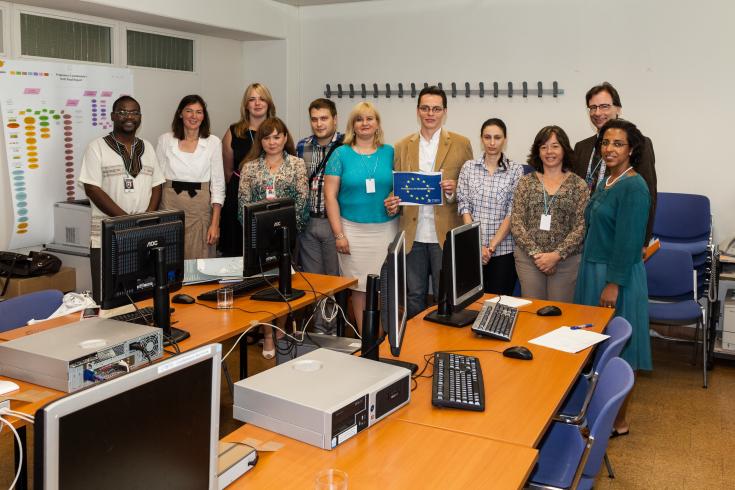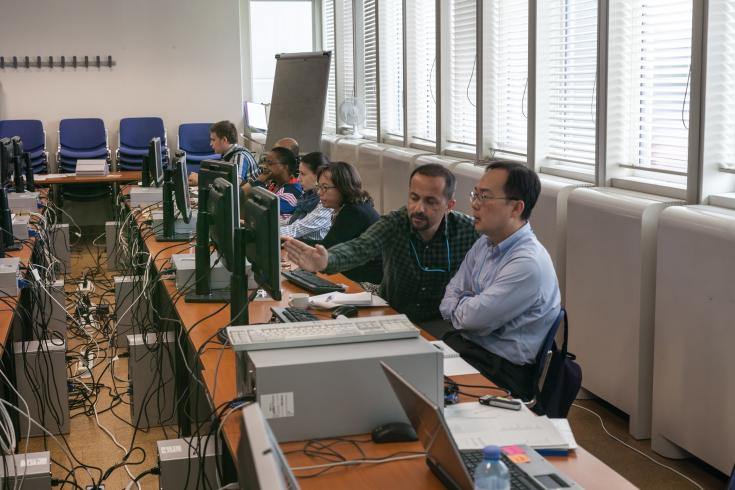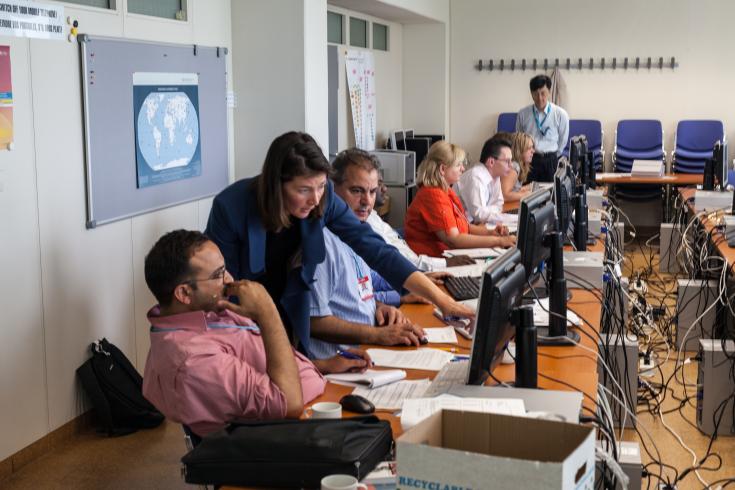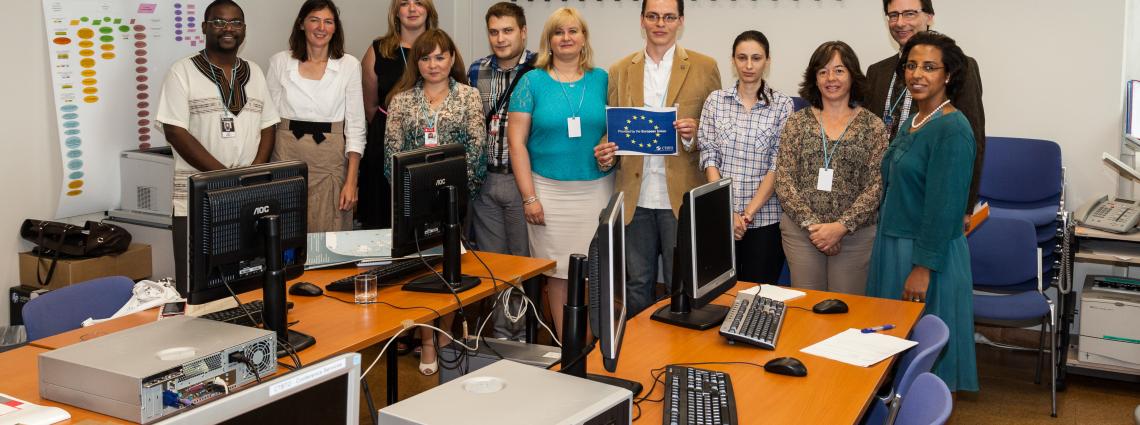Fifteen more experts receive training in the use of CTBTO data
“People need to appreciate the value offered by the CTBTO data and realize that the data are available for Member States free of charge. This course has also highlighted the scientific and technical capabilities of the verification regime.”

EU-sponsored participants with their CTBTO mentors.

Experts from four continents participated in the training course.

Lucrezia Terzi and Jun-Hee Lee of the CTBTO train participants in the use of Geotool, a waveform data analysing tool.
“We don’t have an official NDC in Mexico yet so the knowledge I’ve acquired here about how to install an NDC is extremely useful. We now have the capabilities to establish an NDC.”

Young Soo Jeon (right) from the Korea Meteorological Institution receives his certificate from Remmy Phiri (centre), the NDC Training Course organizer. To his left: CTBTO’s Chief of Capacity Building and Training, Martin Kalinowski.
9 Jul 2013
